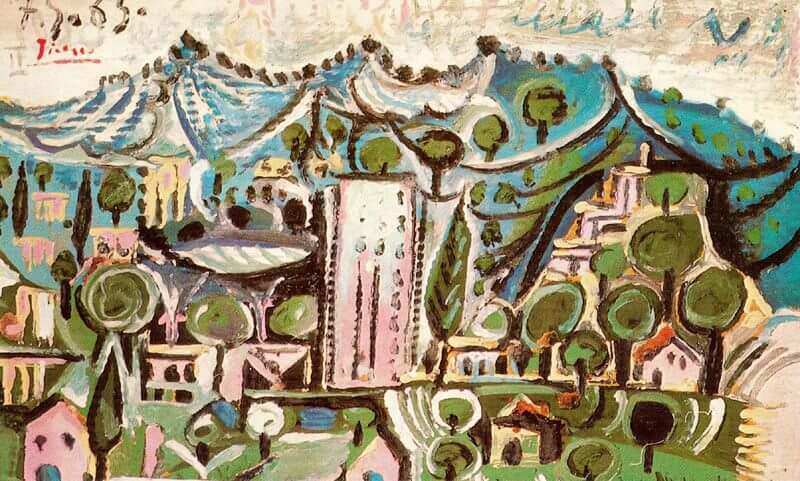Landscape Mougins, 1965 by Pablo Picasso
Toward the end of his life, Picasso spent most of his time at his villa, Notre-Dame-de-Vie, in Mougins on the French Riviera, which was bought in 1961 after La Californie suffered from over-development around Cannes.
It was at Notre-Dame-de-Vie that Picasso died in 1973. The place, due to the surrounding views, was the inspiration for many later works, particularly this fabulous landscape.
Picasso was not known as a landscape artist, being more interested in the pastoral epic such as Guernica (1937) or parodying styles by Vincent van Gogh
or Édouard Manet. The landscape of the body became his true life's work. However, in this picture, there is a wonderful sense that Picasso finally breaks free from some self-imposed constraint
or theory about landscape and discovers a real voice of his own. There is a harmony and stillness as if the scene is melting before his eyes into myriad forms and colours, while it fades into the universal. Just before his death,
Picasso seems to have recognized something fundamental and spiritual that transcends time. The scene of the Mougins villa, almost fades into this timeless, sylvan scene, signifying the imperviousness of nature to human
constructions. This spiritual quality is conjured up by the cool hues, particularly the use of turquoise to create depth.





















